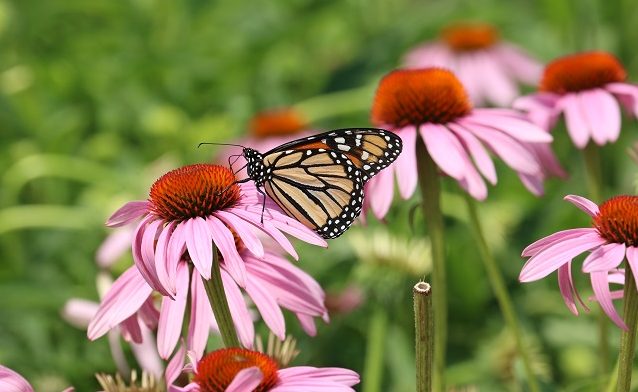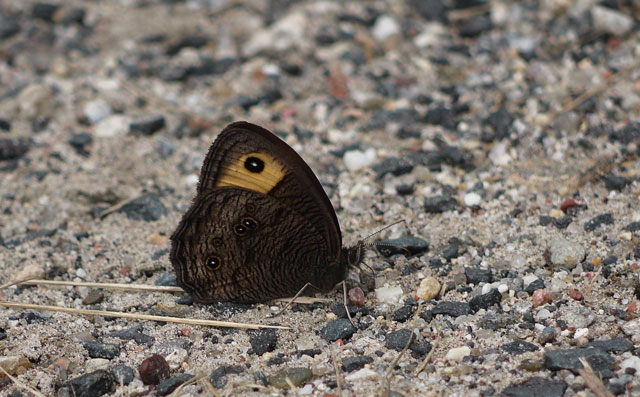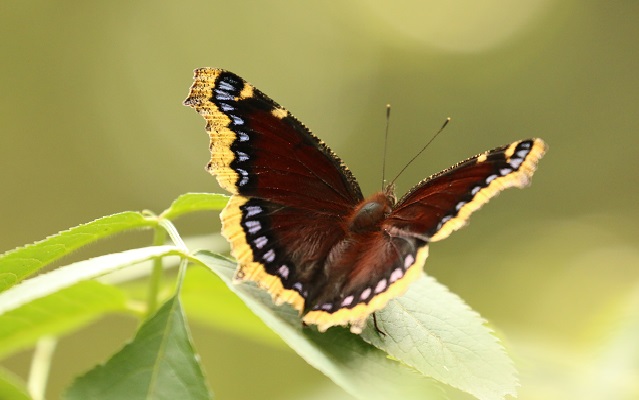Sure butterflies can be found frolicking in open meadows on warm, breezy summer days, but these exuberant and colorful insects can also be found in your own backyard—if you play your cards right! What does it take to bring the flutter closer to home?
Broad Meadow Brook Wildlife Sanctuary Conservation Coordinator Martha Gach weighs in on the top 5 ways to attract butterflies.
Plant so that your yard has flowers blooming all season long

Monarch
Why Between March and October, over 100 different butterflies can be found in Massachusetts, but not all at the same time. Mourning cloaks are seen mainly early spring, mid-summer, and fall; swallowtails are present late May to September and monarchs June to October. If you have the right kind of flowers, butterflies will come.
How Nothing blooms all season long, but by choosing plants that flower at different times you can attract a constant stream of butterflies. For spring, think dandelions and chives. Mid-season beauties include milkweeds, butterfly bush, zinnias, verbena, and blazing star. Asters, sunflowers, and Joe-Pye weed attract late-season butterflies.
Did you know? Over 60 different insects, including monarch butterflies, need milkweed to complete their life cycle. These insects not only have adapted to potent chemicals in milkweed, but some use them to repel predators.
Keep caterpillars in mind
Why Baby butterflies are picky eaters. Monarch caterpillars only eat milkweed, fritillaries like violets, spicebush swallowtails eat … well, spicebush (as well as sassafras).
How Your yard should include a variety of host plants and trees to support butterfly caterpillars. In addition to the several kinds of milkweed, consider willow, poplar, cherry, sassafras or spicebush, parsley or dill, and pussytoes to feed and shelter baby butterflies during their growing season.
Did you know? Early instar swallowtail and viceroy caterpillars are camouflaged to look like bird droppings. Late instar swallowtails have big spots that resemble snake eyes. When threatened, these caterpillars will rear up “eyes” first and the “snake” scares the predator away.
Make a “Puddle”

Common wood nymph
Why Dirt contains salts and minerals that butterflies need to supplement their nectar-rich diet. Butterflies sip, so they need mud or small puddles to get their mineral fix.
How A sandy area or one covered with small gravel works well as a “puddling spot.” Just keep it damp and watch for butterflies hanging out, poking in the dirt with their straw-shaped proboscis (kind of like a tongue).
Did you know? Butterflies that gather at puddles are mostly males, which need the additional nutrients for reproduction. Drive slowly down sunny dirt roads and look for butterflies hanging out on the edges. They are probably “puddling”!
Skip Insecticides
Why Many insecticides are general and kill everything, including beneficial insects such as ladybugs (which eat aphids) and butterfly caterpillars. Insecticides can also stay in the environment for many years.
How Learn which bugs are destructive and hand-pick them off your plants (whatsthatbug.com and bugguide.net are good online ID guides). If you absolutely must, use gentle and effective insecticidal soap.
Did you know? That striped caterpillar chowing down on your parsley will someday become a beautiful black swallowtail butterfly!
Leave the Leaves

Mourning Cloak
Why Unlike monarchs, not every butterfly migrates before cold weather hits. Many spend the winter as caterpillars or chrysalids dormant in leaf litter or just under the soil. If you rake up all your leaves, you could be disposing of the next summer’s butterflies.
How Leaves under your shrubs and along fences are a whole ecosystem unto themselves. Avoid the urge to rake until early June, when caterpillars have woken up and moved out.
Did you know? Mourning cloaks, one of our earliest butterflies, overwinter as adults, hidden under loose bark and under logs (and perhaps in the walls of your home). They emerge before the flowers, nectaring on tree sap.
Want to know more?
For more information on attracting butterflies:
- Sign up for an upcoming butterfly program at a wildlife sanctuary near you
- Check out one of the many butterfly books available at the Audubon Shop including The Butterfly Watcher’s and Gardener’s Guide.

